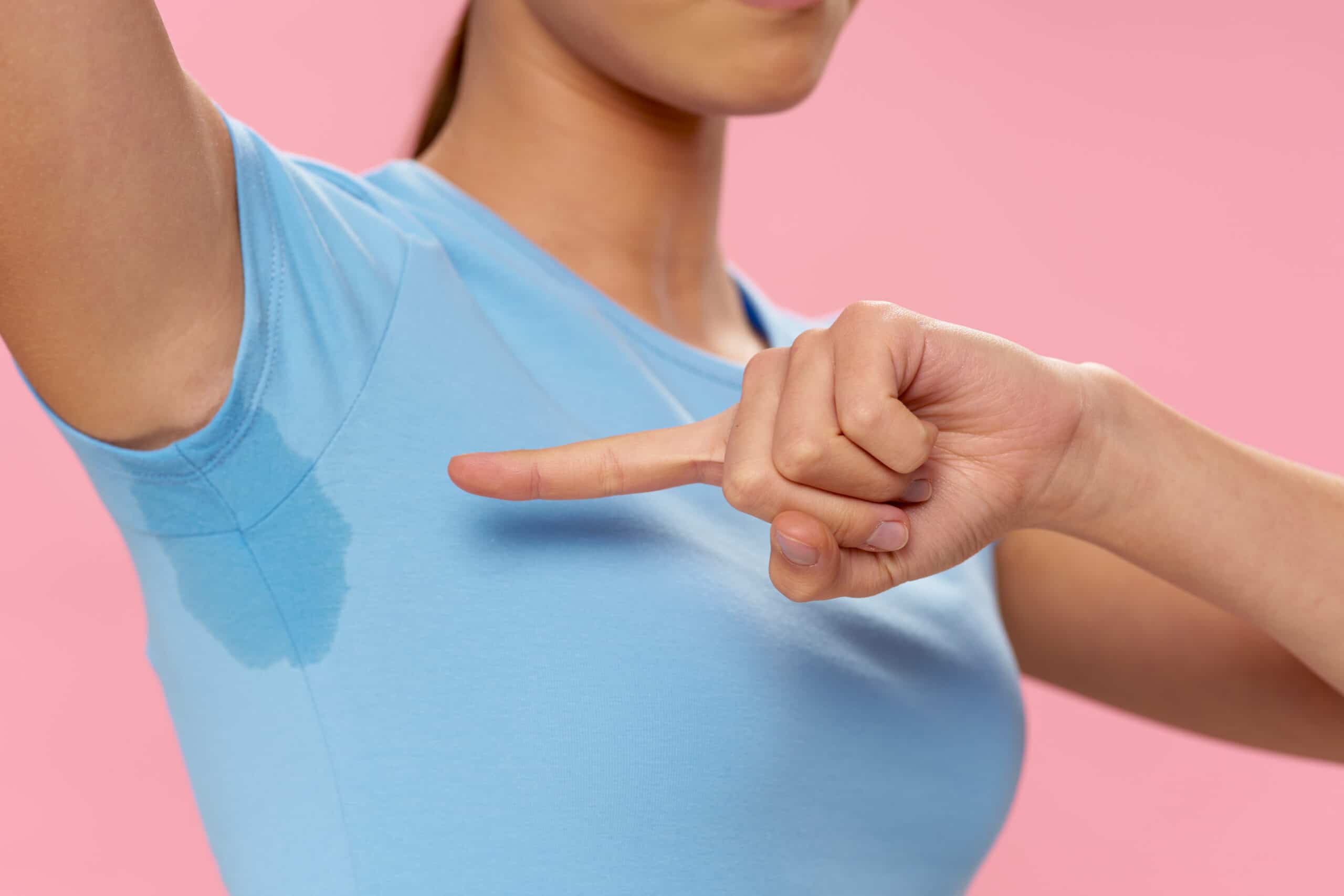Anti-Wrinkle Injections: Effective treatment for excessive sweating or 'hyperhidrosis'

What is hyperhidrosis?
Excessive sweating, or hyperhidrosis, is characterised by abnormally increased sweating, in excess of what is required to regulate body temperature. The most common areas of the body that are affected by hyperhidrosis are the hands, feet, underarms, scalp and groin, due to a higher concentration of sweat glands in these areas.
There are 2 types of hyperhidrosis: primary hyperhidrosis, which is not due to any underlying medical issue, and secondary hyperhidrosis, where there is an underlying medical condition causing increased sweating that needs to be investigated by a doctor. It is estimated that about 3% of the population is affected.
How can hyperhidrosis be treated?
If an underlying medical condition is contributing to the problem, that condition will be treated first. If no clear cause can be found, treatment focuses on controlling excessive sweating. Sometimes you may need to try a combination of treatments. Even if your sweating improves after treatment, in some cases, it may reoccur.
There are several prescription medications that can be used to treat hyperhidrosis including antiperspirant, creams, nerve-blocking medications, antidepressants and botulinum toxin injections.
At Main Street Cosmetic and Skin, we perform highly effective injectable treatments for hyperhidrosis.
Injections of the botulinum toxin (also used as anti-wrinkle injections) are very effective in the treatment of excessive sweating, especially for the underarms, palms, and feet. The effects of these small injections usually last from four to twelve months. Generally minimal side effects are experienced, but may include pain at the injection site and compensatory sweating in other areas. Topical local anaesthetic or ice can be applied to the area before the procedure for your comfort. This is the most commonly performed treatment for hyperhidrosis at our clinic.
Lifestyle and home remedies
The following suggestions may be used in conjunction with other treatments to help manage hyperhidrosis and body odour that may occur alongside the issue:
Use antiperspirant: non-prescription antiperspirants contain aluminium-based compounds that temporarily block the sweat pore. This reduces the amount of sweat that reaches your skin.
Apply astringents: apply over-the-counter products containing tannic acid (Zilactin) to the affected area.
Bathe daily: regular bathing helps keep the number of bacteria on your skin in check. Dry yourself thoroughly, especially between the toes and under the arms.
Choose shoes and socks made of natural materials: shoes made of natural materials, such as leather, can help prevent sweaty feet by allowing your feet to breathe. When you’re active, moisture-wicking athletic socks are a good choice.
Change your socks often: change socks once or twice a day, drying your feet thoroughly each time. You may want to try pantyhose with cotton soles. Use over-the-counter foot powders to help absorb sweat.
Air your feet: go barefoot when you can, or at least slip out of your shoes now and then.
Choose clothing to suit your activity: generally, wear natural fabrics, such as cotton, wool, and silk, which allow your skin to breathe. When you exercise, you might prefer fabrics designed to wick moisture away from your skin.
Try relaxation techniques: consider relaxation techniques such as yoga, meditation, and biofeedback. These can help you learn to control the stress that triggers sweating.